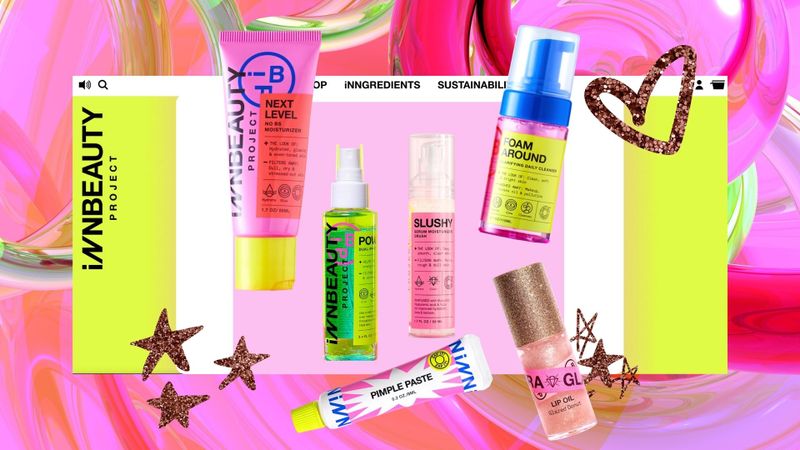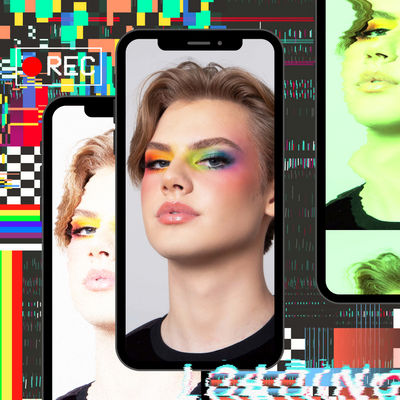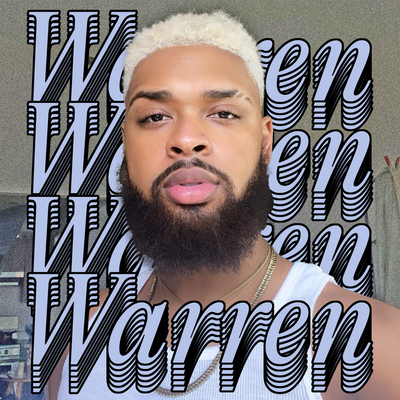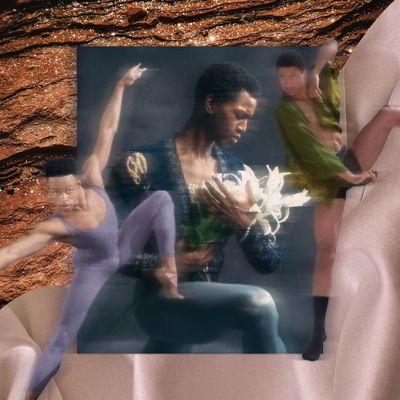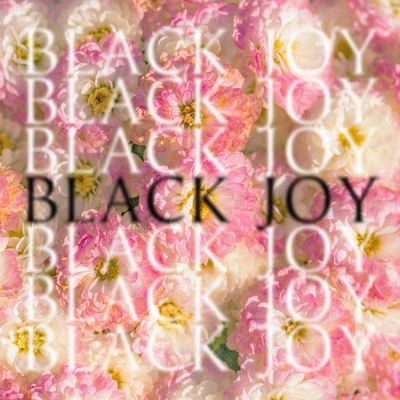Alisa Metzger grew up wanting to be a professional ballerina.
After a spinal surgery ended her dance career, Alisa entered the beauty industry through a chance position at L’Oreal. Fifteen years later, she founded iNNBeauty Project with the belief that the industry was lacking a clean, accessible and inclusive skincare brand, created by and for Gen Z. Just a handful of months after the brand launched, iNNBeauty Project has thousands of Instagram followers worldwide, all of whom are obsessed with the brand’s innovative and stunning products.
The iNNBeauty Project co-founder sat down with Very Good Light to discuss how she stumbled into the beauty industry, the importance of innovation, and what it was like building the market’s boldest and brightest brand.
Tell us a little bit about yourself and your journey. What brought you into the beauty industry, and why do you love it?
When I was growing up, I was actually a ballet dancer, a serious one! I attended the school of American Ballet. My hopes and dreams were to become a professional ballerina. So really, my life was all about ballet – I would dance in the mornings, have my academics, then I would dance or perform in the evenings.
When I was 17-years-old I had to get spinal surgery, and it was all very sudden. I had a spinal condition that I had to fix, and I had my spine fused. Needless to say, I couldn’t dance with the same kind of rigor and passion. I was kind of lost. At that age, you don’t know what the opportunities are. You have no idea what you want to do. You just know what you love.
I stumbled into the world of beauty – my first role was at L’Oreal. I loved the combination of aesthetics and business and psychology and marketing, and that’s how I chose my path and I haven’t looked back. I’ve worked at a bunch of big companies – L’Oreal, Proctor and Gamble, Coty – and then some smaller companies, and I just love everything about this industry. I love the technical aspect of it, the commercial aspect of it. I love the creativity that it has – I think it’s so fun and interesting. And it’s driven by innovation and creativity. This is my life, for the past fifteen years. It’s been incredible.
Growing up, did anyone or anything in particular influence or spark your love for beauty? If so, does this serve as inspiration for your own brand?
That question takes me back to this pivotal moment in my teenhood. It was the launch of CK1 fragrances by Calvin Klein. It was the first ever unisex fragrance that was marketed towards men and women, really the first provocative campaign that had guys and girls and people of all different ethnicities and skin tones and androgynous models. It was just so groundbreaking and so cool.
Everything that I saw up until this point that was marketed was very traditionally female in fragrance – very beautiful, very pink, very in the lines of what we imagine to be gender roles. That whole [CK1] campaign and all those people standing in a group together, so different from one another, and that idea of non-traditional beauty, was something that I think I still look to as far as what beauty should look like and what it stands for. What’s different and unique is what makes us beautiful and interesting.
What was it like deciding to start iNNBeauty Project? Where did you begin when you decided to branch out and build your own brand?
Five years ago, there was this movement, similar to the food industry – consumers of skincare started to really focus on the ingredients that were in their products. Brands, and the industry overall, started shifting towards cleaner formulation and cleaner marketing. I know we still have a long way to go, but I think we’ve come a long way with that as well.
In the beginning of that movement, there were some incredible brands that I look up to that were pioneering this clean movement – Drunk Elephant, Herbivore Botanicals, Youth to the People – some really incredible brands. But the one thing I saw that they had in common was a pretty high price tag.
When you think of the American public, and how much they earn – the average American makes under $45,000 a year – and then you think of the average price of a clean beauty product back then, you realize it’s becoming an elite proposition, really only for someone that has money to spend. If you’re thinking about buying your three-step, four-step routine from a brand that is pricier, that’s upwards of two or three hundred dollars. For the average person out there, that’s just not affordable.
The other thing with that is if you’re charging this much money, you’re really targeting a non-diverse audience. Wrinkles and dryness were the top skincare concerns of Caucasian women who were in their late thirties to sixties. So the other thought that popped up was, what about the skincare concerns of everyone else? Whether it’s acne, or skin tone, or skin texture – if you think about the mass audience out there, wrinkles and dryness aren’t the main concern. So it was like, how do we build a brand and a company around being inclusive from a price perspective so that most can afford it? From a benefit perspective, it was how can we not talk just to one demographic, one skin tone, one skin type?
The other thing was, I noticed the early brands weren’t talking to a younger customer. I really saw a blank space in that, because this younger person understands how important it is to take care of their skin and is trying to get their skin to a healthier place. There’s just all these brands marketed to their moms, or someone way older.
And from an aesthetics perspective – because I love the world of aesthetics – what we saw back then was also millennial pink everywhere. Glossier did it first and they did it best. I think it’s so beautiful, and such a commercial aesthetic, and they really own it, but then we saw a bunch of other brands pop up trying to replicate that success. So when you walked into a Sephora, everything in skincare was pale pink, and beige, and white, and clean, and minimalistic. We decided we needed to go in the opposite direction because not everyone loves this aesthetic.
We think about the spending power of Gen Z, and the power of that generation overall – they may not be into the soft pink palette. We decided we have to go bold and crazy so that people, whether they love it or hate it, can’t miss us. Those are all the different factors that didn’t exist, and I felt if we put all these together, it could really be something.
It’s cool to hear that your mission is so Gen Z-forward because VGL works towards that same mission every day.
Having experience working for large companies, you always think about your consumer and the journey of your consumer, and how do you grow with them and vice versa. Just looking at the landscape, there are a ton of brands that are tracking to millennials, older millennials, and older than that, because it’s easy to address their skin concerns.
But thinking ahead, about what is the most powerful generation – to me, it’s Gen Z. It’s a no brainer. It’s the future of everything! Gen Z is so powerful in so many different ways. I think they’re going to make the world a better place, they’re going to call us out on different issues. I think it’s so exciting to create a business, a brand, and a world for this generation, and to do it together with them. We’re not just saying “here’s what you need to buy”, but we’re constantly asking for feedback, paying attention to the comments, and being in sync.
Through your journey with this brand, was there one moment where you were like, “Okay, this is it, we’ve made it”?
Oh, my gosh! I think I as an individual am extremely tough on myself – I always have been, on the work that I do, what I produce, and how I execute. I do think that goes back to my ballet days because ballet is one of the toughest disciplines out there. I don’t know that I’ll ever feel that we made it. It’s a very competitive space too, so I think that makes it even tougher. There’s a new brand being born every single day.
One fun little fact – we launched Slushy, and we’re so excited about the product because it’s so innovative. It’s a formula that doesn’t exist anywhere. You’re unable to buy a dupe because we’re the first to market with it. The package is the world’s first recyclable plastic pump that you can throw in your recycling bin – it’s curbside recyclable. It doesn’t have the metal spring that deems all other pumps unrecyclable. It’s got a lot going for it. It’s true innovation. We saw a bunch of different product developers from different companies order it. And we were like, “Aha! They want to try it! They like the idea!” That was one of those moments that was cool, to know that was an innovation that people have their eye on. So there are little moments like that. We’ll see what happens with it!
If you could give any advice to burgeoning Gen Z innovators, what would you say?
Two things. One thousand percent, go for it. I always say if you have a burning desire to do something, and you wake up every day and your heart beats faster when you’re thinking about that idea, you owe it to yourself to do it. We have one life that we live, and we’ve got to live it to the fullest and make sure when we go to sleep that we feel like we’ve accomplished everything we wanted to.
Number two is don’t undervalue experience. That’s what will make your road a lot easier. A lot of the time it is the relationships that you’ve built along the way, the experience in making a certain decision, that will make that road of starting a brand or a business or a project so much more fluid. All the roadblocks that you may come to will be a lot easier to overcome if you’ve done it before, or if you know who to call.

